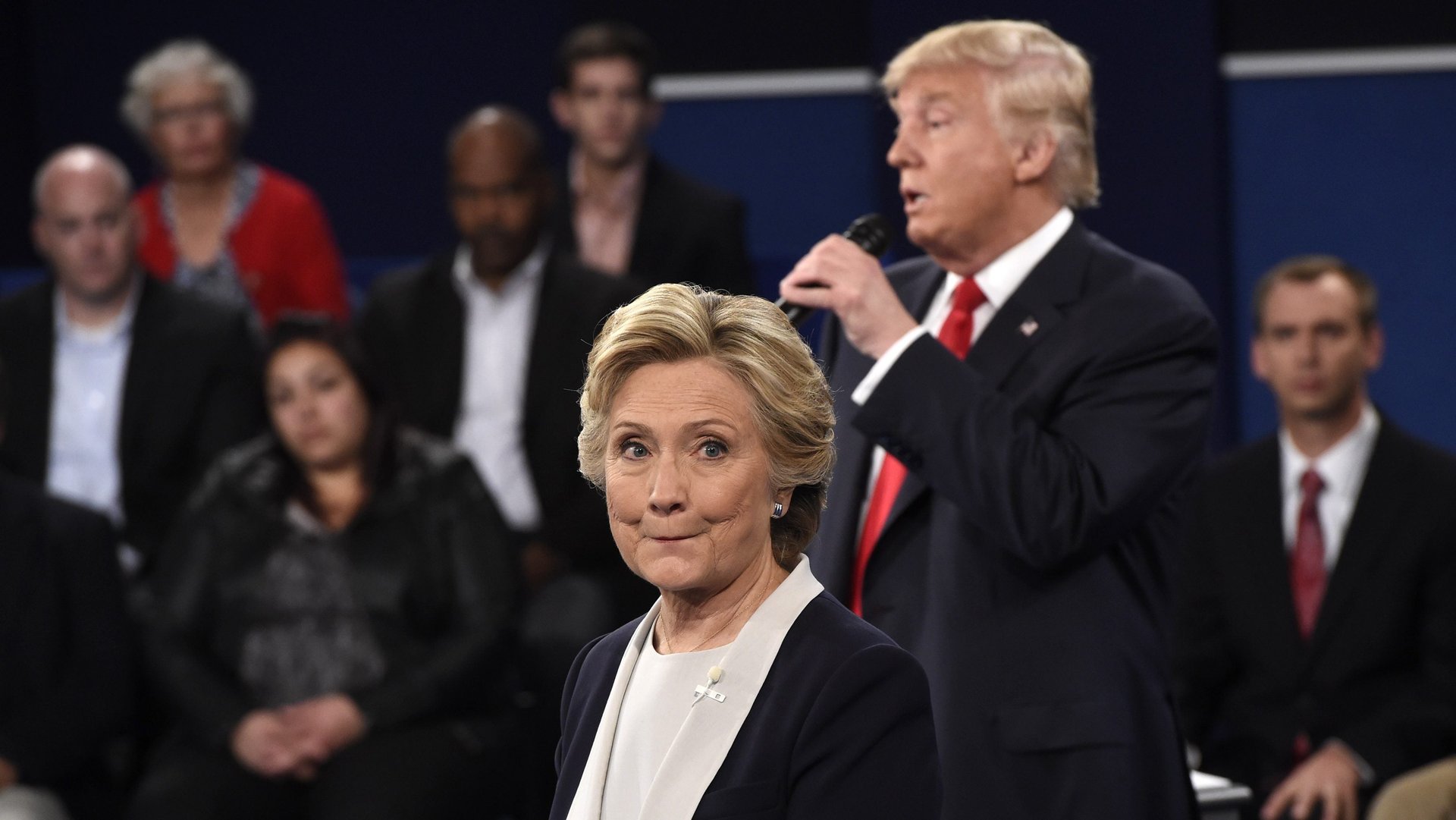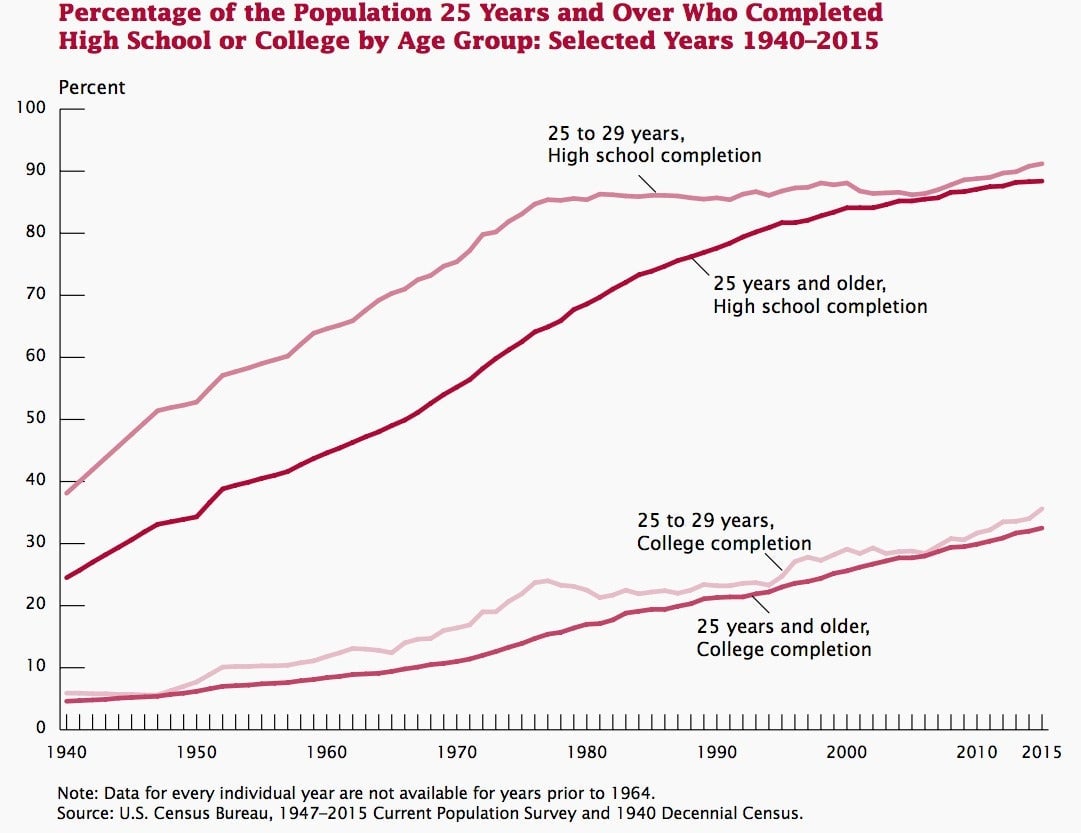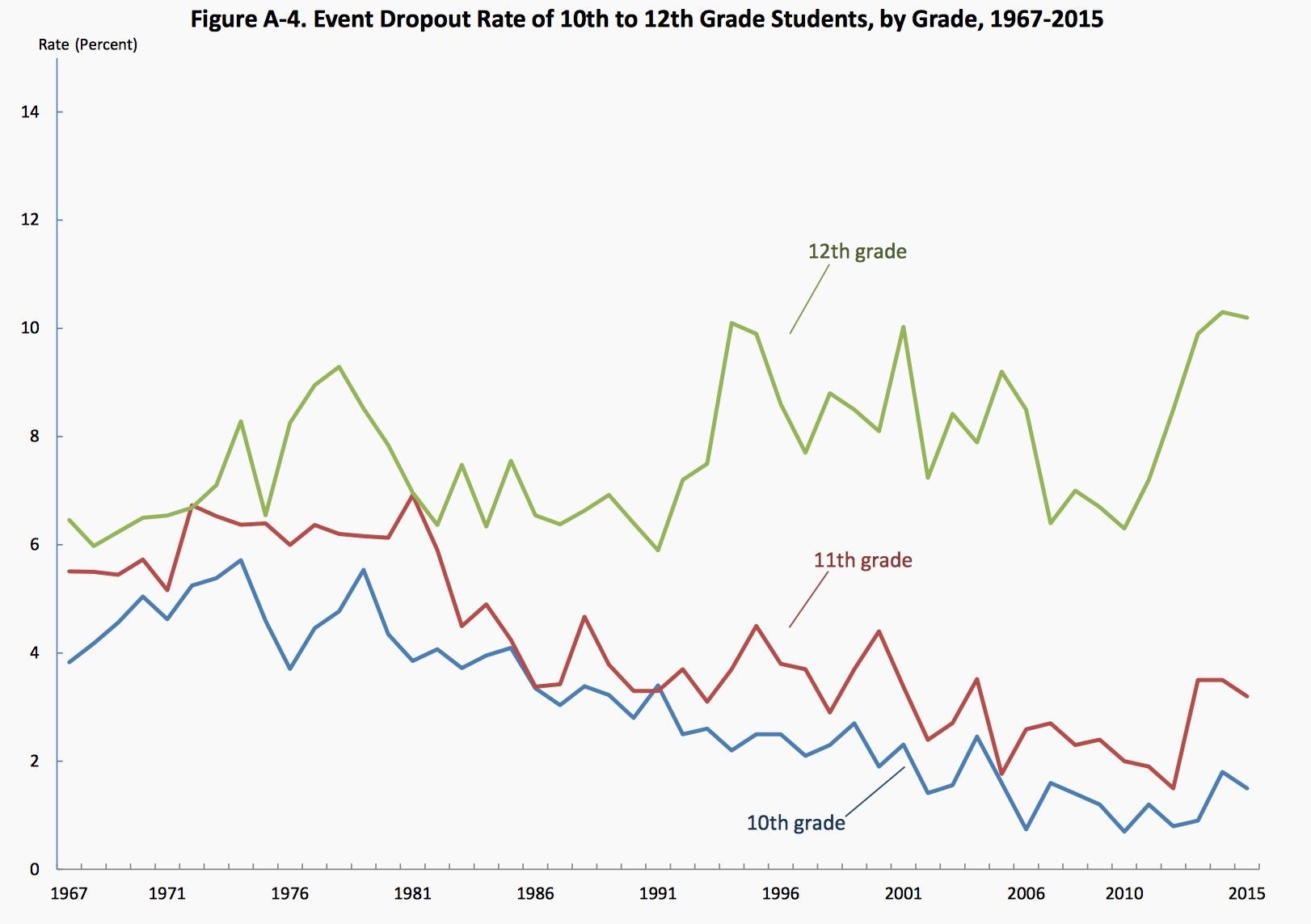There’s a simple, smart way to grow the US economy, and it was all but ignored during the presidential debates
The economy worries Americans more than anything else these days. And the four presidential debate moderators completely ignored one of its most crucial drivers, education.


The economy worries Americans more than anything else these days. And the four presidential debate moderators completely ignored one of its most crucial drivers, education.
Why is education so important? To understand the answer, we turn to The Rise and Fall of American Growth, economist Robert Gordon’s magisterial study of whether the US economy’s unparalleled expansion since 1870 can possibly continue.
Gordon estimates that from now until 2040, real GDP per person will grow at an annual rate of only 0.8%. That compares with an 1.8% rise between 1970 and 2014, and 2.4% in the five decades before that.
What’s holding America back? Gordon fingers education as one of the four big headwinds (along with inequality, demographics, and government debt) threatening the US economy.
Bad news, America
It’s accepted that there are only two ways to grow an economy, in absolute terms. The first way is to add more workers. The second way is to increase the productivity of the workers that an economy already has. That means increasing the rate of how much stuff each worker produces in a set amount of time.
The better educated a workforce, the more productive it tends to be. The US’s relatively brisk growth throughout most of the last century was thanks in large part to its workforce’s rapidly rising share of college graduates. When educational attainment keeps growing, so does the economy. Typically, that means incomes also keep climbing.

But America’s educational attainment, as we can see in the chart above has stalled out. That’s particularly true for those who come from a poor or middle-class background. Though college completion levels have kept ticking up, high school graduation rates began stagnating in the 1970s. Meanwhile, the lousy test scores of American high school students compared with kids from other advanced economies implies that the crumbling quality of American education will erode future economic growth. That will make it even harder for future generations of poorer Americans to raise their incomes. It’s a vicious cycle.

There’s good news too, though
After studying American productivity for most his career, Gordon concludes that policy can boost productivity more than we once realized. And of a litany of areas to focus on, education is “the most fruitful direction for policies to enhance productivity growth.” (Gordon is a big fan of preschool education in particular.) Educational reforms can also help shrink income inequality and lift more people out of poverty.
Here’s the second snippet of glad tidings: At least one presidential candidate is interested in trying to do this. Hint: It’s not the one who said this in the third and final debate: ”Our inner cities are a disaster. You get shot walking to the store. They have no education. They have no jobs. I will do more for African-Americans and Latinos than she can ever do in 10 lifetimes.” That would be Donald Trump, of course. To her credit, Hillary Clinton brought up education on her own in all three debates; in the last one, she explicitly linked education to economic growth.
To give everyone a better sense of how Clinton and Trump plan to rescue America’s ailing education system, we’ve laid out their policy proposals according to their remarks and platforms.
Donald Trump: let the states figure it out
Trump’s education policy is based on two popular demands among America’s conservatives: first is opposition to the Common Core, a set of federal academic standards and goals. Second is school choice, a position that he revealed only recently. Trump has pledged to end Common Core, leaving setting education benchmarks up to states. But whether schools should adopt the standards is, in fact, already up to individual states, more than 40 of which have done so—thus making it hard to get rid of.
Trump wants to funnel $20 billion into school choice, which is the concept that parents should be able to pick a school for their child regardless of whether it is public, private, charter, or magnet. Trump is advocating that states contribute funds from their own budgets to ensure that students living in poverty be able to make their own decision about education as well.
On higher education, Trump’s policies are more vague. According to his platform, as president he would work with Congress to “to ensure universities are making a good faith effort to reduce the cost of college and student debt in exchange for the federal tax breaks and tax dollars,” and that higher education, be it college or vocational training, be “easier to access, pay for, and finish.”
Hillary Clinton: invest in children, teachers and parents
Education is one of the foundations of Clinton’s campaign. She has two areas of focus: early childhood education, and student debt. She is calling for universal preschool for all four-year-olds and increasing investment in Early Head Start programs, which help low-income mothers and their children. Her policies emphasize making early childhood care and education easier both on parents and teachers. Clinton says she wants to up the pay of teachers and care providers. She also wants to award scholarships to college students raising children, and to provide childcare options on college campuses.
Pushed by Bernie Sanders’ primary campaign proposals to provide free (and debt-free) education to college students, Clinton adopted a set of policies that would lighten the burden placed on students and their families. She would eliminate tuition in public colleges or universities for families with an income of under $125,000 by 2021, and immediately for those earning $85,000. She also has proposed that all community college should be free. She intends to introduce a number of debt relief, refinancing and debt forgiveness efforts, including deferring education payments for “aspiring entrepreneurs.”
On K-12 education, Clinton promises to increase access to computer science classes—which minority students tend to be less exposed to—and rebuild and fix schools that are falling apart. She hopes to break the the school-to-prison pipeline, in which minority children are funneled into the juvenile justice system, rather than getting help at school. Her intention is also to “elevate and modernize” the profession of teaching by training and increasing teacher pay and forgiving any student loans to new teachers after 10 years.
As is true in many areas of their platforms, the differences between the candidates could not be starker when it comes to education. Trump’s plan involves tearing down a federal standard that upsets conservatives, and offering vague promises to reduce the cost of education through tax credits and other institutionally focused incentives. Clinton wants to provide financial relief directly to students pursuing higher education, and to modernize and reform the early education programs that economists like Gordon believe are crucial to future GDP growth.
On Nov. 8, even if most Americans who watched the debates don’t realize it, they will be choosing between two very different approaches to reforming education, and, by extension, the overall American economy.